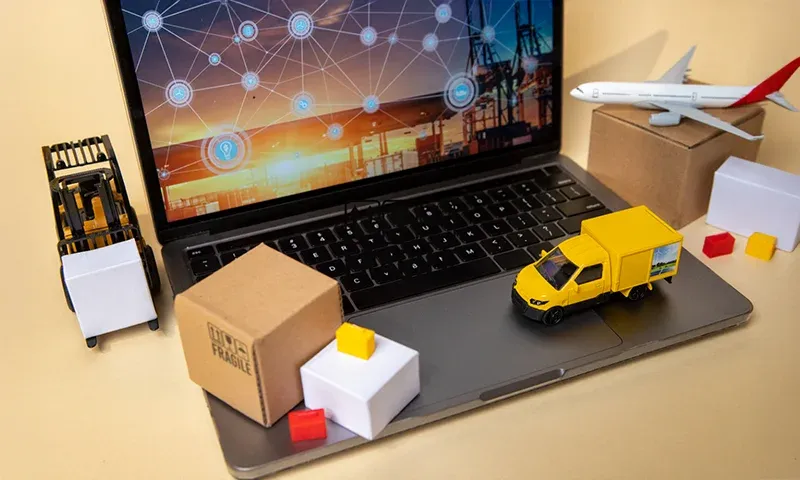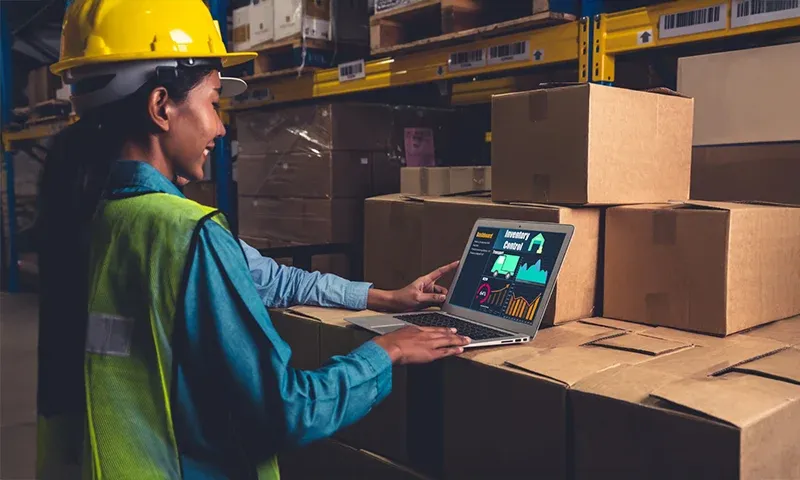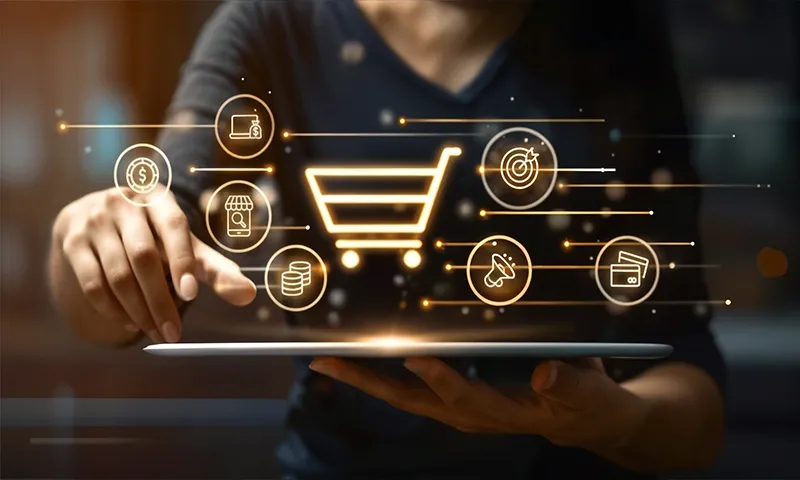Streamlined Logistics for Superior E-Commerce Experience
Customer satisfaction in a technology economy relies on process excellence. Pollux links e-commerce websites and logistics websites to offer real-time visibility, seamless fulfillment, and enhanced post-purchase customer satisfaction.

Logistics integration and e-commerce platforms are a requirement and no longer a luxury. Those companies that give utmost priority to their logistics operations and their e-commerce system can be the market leader, streamline their process, and serve better to customers.
In this blog post here, we are going to be discussing why you have to integrate the e-commerce and logistics platforms to serve the customers, why it is going to be good for your business, and how you need to make sure that it's an integration without a hitch.
The e-business has changed the face of retail business, and with it, the customers' expectations and dreams have touched a high record. The achievement of one-day or two-day delivery of Amazon has created a benchmark of speedy and secure delivery. Your customers look for some delivery, live tracking, and even flexible delivery, and they don't wish to wait.
The same survey recently found that 75% of customers report that their delivery experience makes or breaks whether or not they make the purchase and shop at the store again. Since customers have it so easy to jump between stores with a hat drop, providing an amazing delivery experience isn't a competitive advantage—it's a retention necessity.
E-commerce logistics can, nevertheless, get complicated. It's from keeping the inventory, planning to send it out, selecting the carriers to carry it in, and making sure to get it to them on time. If there is no middle ground to bridge the two - e-commerce and logistics - then all of these become siloed, which is an open door to inefficiency, miscommunication, and mistakes that ruin the customer experience.
Where logistics and e-commerce systems are insulated, the chances of delays, errors, and miscommunications are higher, ultimately leading to customer dissatisfaction. Logistics integration with e-commerce systems prevents order processing from being interrupted, enables updating of inventory in real-time, and the customers are notified at all shipping stations.
This is the way in which logistics and e-commerce system integration can transform customer satisfaction:
1. Tracking Order Status and Real-Time Information
The biggest online customer expectation is real-time order tracking. It is challenging to have decent tracking in some form without integration, particularly when the front-end e-commerce applications and back-end logistics applications are separate.
Integrative systems, however, will automatically route e-commerce orders to logistics providers. This can be done in the sense that real-time tracking information can be displayed to the customers directly from the site where the purchase was completed. For instance, after a purchase, he or she can be informed via email with tracking details as well as real-time status for his or her delivery in real-time.
Real-time tracking not only avoids customers from stressing over when they will receive their order but also enables companies to rectify any problem beforehand. If there is a problem or delivery is delayed, the system notifies the company and customer so that they can rectify it beforehand and notify accordingly.
2. Adequate Inventory and Stock Control
Availability of inventory stock is also of greatest concern to customer satisfaction. Of all things annoying for a customer to have to do, is to order an item and then discover it's out of stock or back-ordered. Inventory control for a multi-channel, multi-warehouse business can be logistically cumbersome, particularly if the site and the logistics platforms are not unified.
A platform that uses the data of the available inventory for all the sales. After taking orders from the customers, real-time inventory could be updated in the logistics platform with accurate stock quantities and no customers buying out-of-stock items.
It even enables companies to optimize demand forecasting to the extent that they have the right quantity of the product in stock, stockout, and incremental cost of inventory to zero.
3. Smarter and Faster Shipping
There will never be a moment when nothing will not be taking time as long as e-commerce sites and logistics are not integrated. Inventory information may be out of alignment with the warehouse, and this means order fulfillment issues. Shipping information may not be communicated to the fulfillment team properly, and this means error or delay in shipping.
With the use of logistics in business online, companies can automate order processing from receipt to shipping. It is quicker processing, better routing, and being able to provide customers with more accurate shipping options.
By having the right data and automation, a business can manage the inventory levels well, choose the most suitable carrier to transport goods, and deliver goods on time. Same-day delivery, next-day delivery, or windowed delivery slots, an integrated solution can help businesses offer multiple shipping options that are capable of satisfying different customer requirements.
4. Adaptive updated Delivery
More and more modern consumers want convenience of delivery. They must select among different delivery time slots, appreciate having multiple shipping options (regular, express, etc.), pick up locally, or select from the store as an option as well. This must be followed by frictionless compatibility in e-commerce and updated logistics systems.
An integrated system will also allow companies to offer individually tailored shipping choices to the consumer based on geography, choice, or past purchasing habits. Consumers in certain geographic locations, for example, can be offered same-day delivery or local area pick-up. Others can be given other national or international shipment options.
Besides that, with coordinated logistics providers, businesses can attain dynamic shipping price delivery time calculation and real-time tracking of orders, therefore their customers are always informed about their delivery options and price before making a purchase.
5. Made Easy Returns Management
Returns management is e-commerce 'most critical task and the one which best comes close to pleasing customers. Good returns management and the prevention of customer frustration also amount to businesses' customer loyalty. Processing returns, however, is a nightmare unless e-commerce infrastructure and logistics go hand in hand, hence causing delays, accidents, and confusion.
If a return point is opened for an e-commerce site in a logistics hub, then return becomes an easy process. The customer requests return on the e-commerce site and automatically generates return labels to guide the customer step by step in returning products.
6. Reduced Costs and Improved Operation
By making the customers content with its operation, coordination of logistics systems and coordination of e-commerce systems also improves operational effectiveness. In disseminating information among systems effectively, organizations reduce the scope of human errors and reduce the cost of operation. For example, through the implementation of automatic order-taking and inventory, organizations are able to ensure timely shipping, reduced overhead, and reduced stockout or back-order risk.
In addition, integration of logistics facilitates companies to pick the lowest carriers and routes and hence save transportation costs while boosting profit. Companies can also dispose of assets utilizing the integrated mechanism, invest in better delivery methodologies, and achieve maximum operational efficiency.
That convergence is also made possible by an on-site capability of real-time monitoring and backward tracing of business position. With it, a precise time refund, replacement, or exchange with a content customer in the form of no-hassle and timely compensation.
How to Make Logistics and E-Commerce Systems Integrate
Making e-commerce systems and logistics integrate is scary, but there is no need. Just do the following steps:
4. Test and Optimize: There would be a need to test the process after it is outfitted with adequate systems and test the process every so often to ensure all is well. Utilize the customer feedback regarding delivery time and overall satisfaction and observe where there has to be an imperative to improve things.
Conclusion: Take Your Customer Experience to the Next Level with Pollux's Seamless Integration
In the current high-competition age of e-commerce, customer satisfaction is a function of the speed and reliability of your logistics operation. From real-time tracking of orders and automated inventory management to dynamically adjusting shipping options and simple returns, it is no longer an option but a necessity to integrate logistics into your e-commerce platform. With such integration, intelligent operations are facilitated, cost savings can be realized, and most importantly, happy customers at every step of the delivery process.
Pollux leads the revolution. Although there are other platforms, Pollux has been optimized to close the business operation gap of commerce and logistics online and between beauty and efficiency in the beauty field. Our smart integration software comes with real-time synchronizing, deep-level automation is included, and a shared dashboard will allow your organization to grow without chaos. From a single warehouse or shipping abroad to a network of warehouses, Pollux ensures your end-to-end checkout-to-doorstep value chain runs in harmony. Enjoy on-time delivery. Logistics stops being your company's showcase with Pollux—it becomes your USP.








